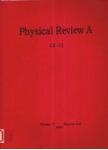版权所有:内蒙古大学图书馆 技术提供:维普资讯• 智图
内蒙古自治区呼和浩特市赛罕区大学西街235号 邮编: 010021

作者机构:ETSI Telecomunicación Department of Signal Theory and Communications University of Vigo Campus Universitario E-36310 Vigo Pontevedra Spain Institute for Quantum Computing & Department of Physics and Astronomy University of Waterloo Waterloo Ontario N2L 3G1 Canada Center for Quantum Information and Quantum Control Department of Physics and Department of Electrical & Computer Engineering University of Toronto Toronto Ontario M5S 3G4 Canada
出 版 物:《Physical Review A》 (物理学评论A辑:原子、分子和光学物理学)
年 卷 期:2010年第82卷第5期
页 面:052325-052325页
核心收录:
学科分类:070207[理学-光学] 07[理学] 08[工学] 0803[工学-光学工程] 0702[理学-物理学]
基 金:Fundação para a Ciência e a Tecnologia FCT (PTDC/CCI-BIO/29266/2017)
摘 要:Most experimental realizations of quantum key distribution are based on the Bennett-Brassard 1984 (the so-called BB84) protocol. In a typical optical implementation of this scheme, the sender uses an active source to produce the required BB84 signal states. While active state preparation of BB84 signals is a simple and elegant solution in principle, in practice passive state preparation might be desirable in some scenarios, for instance, in those experimental setups operating at high transmission rates. Passive schemes might also be more robust against side-channel attacks than active sources. Typical passive devices involve parametric down-conversion. In this paper, we show that both coherent light and practical single-photon sources are also suitable for passive generation of BB84 signal states. Our method does not require any externally driven element, but only linear optical components and photodetectors. In the case of coherent light, the resulting key rate is similar to the one delivered by an active source. When the sender uses practical single-photon sources, however, the distance covered by a passive transmitter might be longer than that of an active configuration.